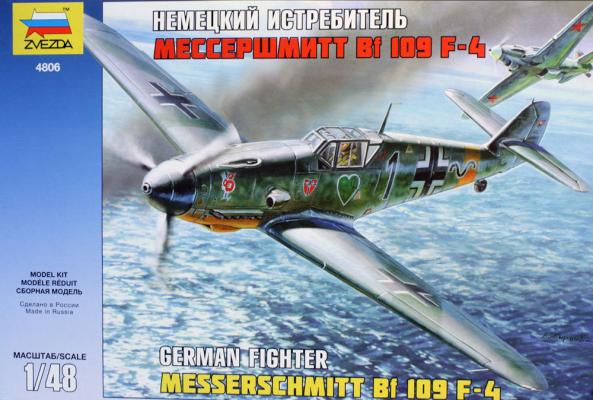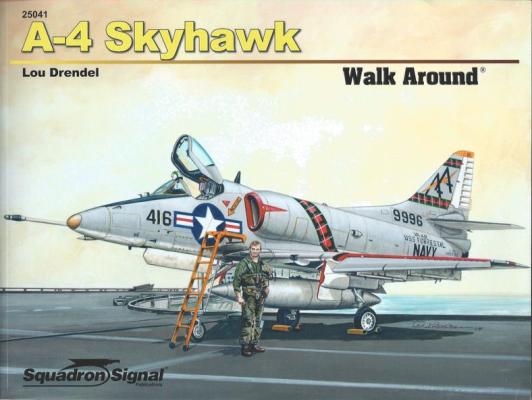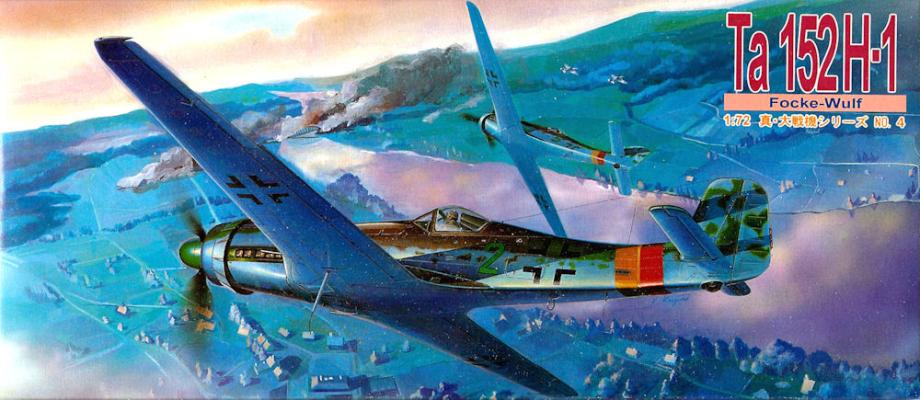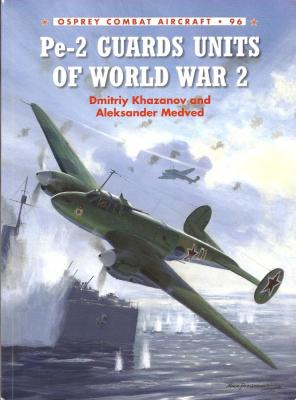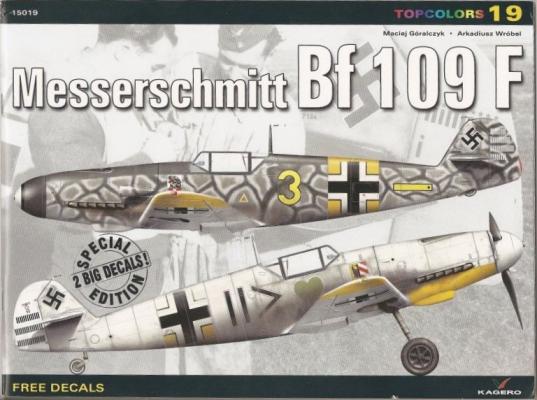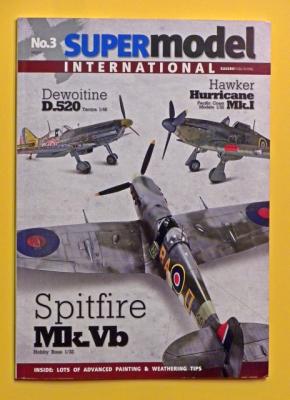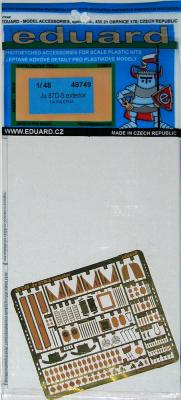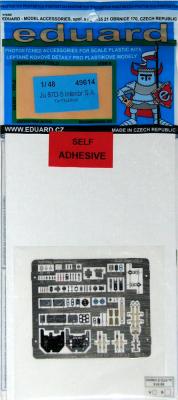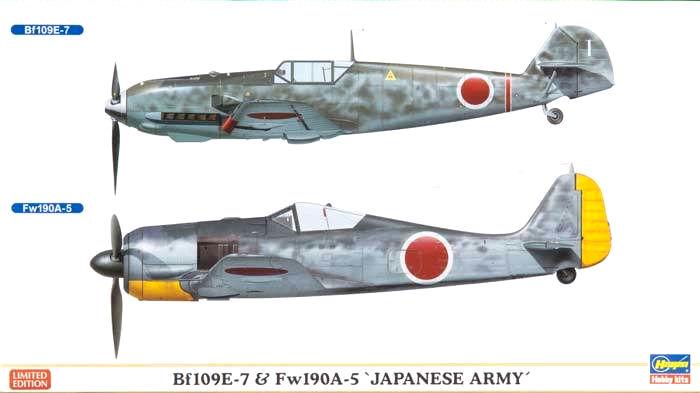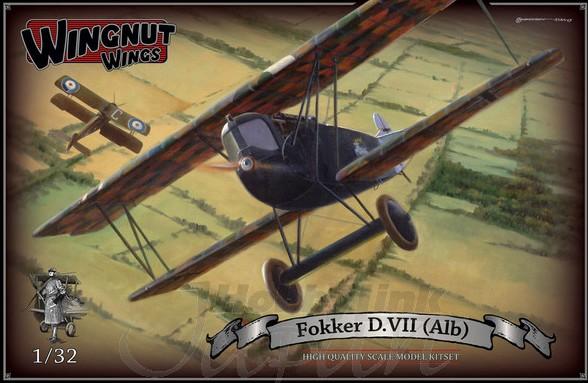The arrival of the Zvezda Bf-109F-4 has been highly anticipated by this modeler. Having built the Bf-109F-2, I was excited about the possibilities. Packaged in an extremely sturdy cardboard locking-lid box, the kit features a beautiful painting of a JG54 aircraft in combat. This is just an exciting beginning to the model.
Inside the cardboard box, you are treated to three large light grey sprues, two smaller light grey ones, and a sprue of clear parts. There are over 200 parts and they are beautifully rendered, although my lower wings were slightly warped. This would be no big deal, as the upper wings would take care of the warp. The detail is gorgeous and perfectly rendered with no flash anywhere. You get parts for the F-4 and F-4/Trop. A relatively complete engine is included, and you’ll have to use most of it regardless if you have the engine cowlings open or not.

